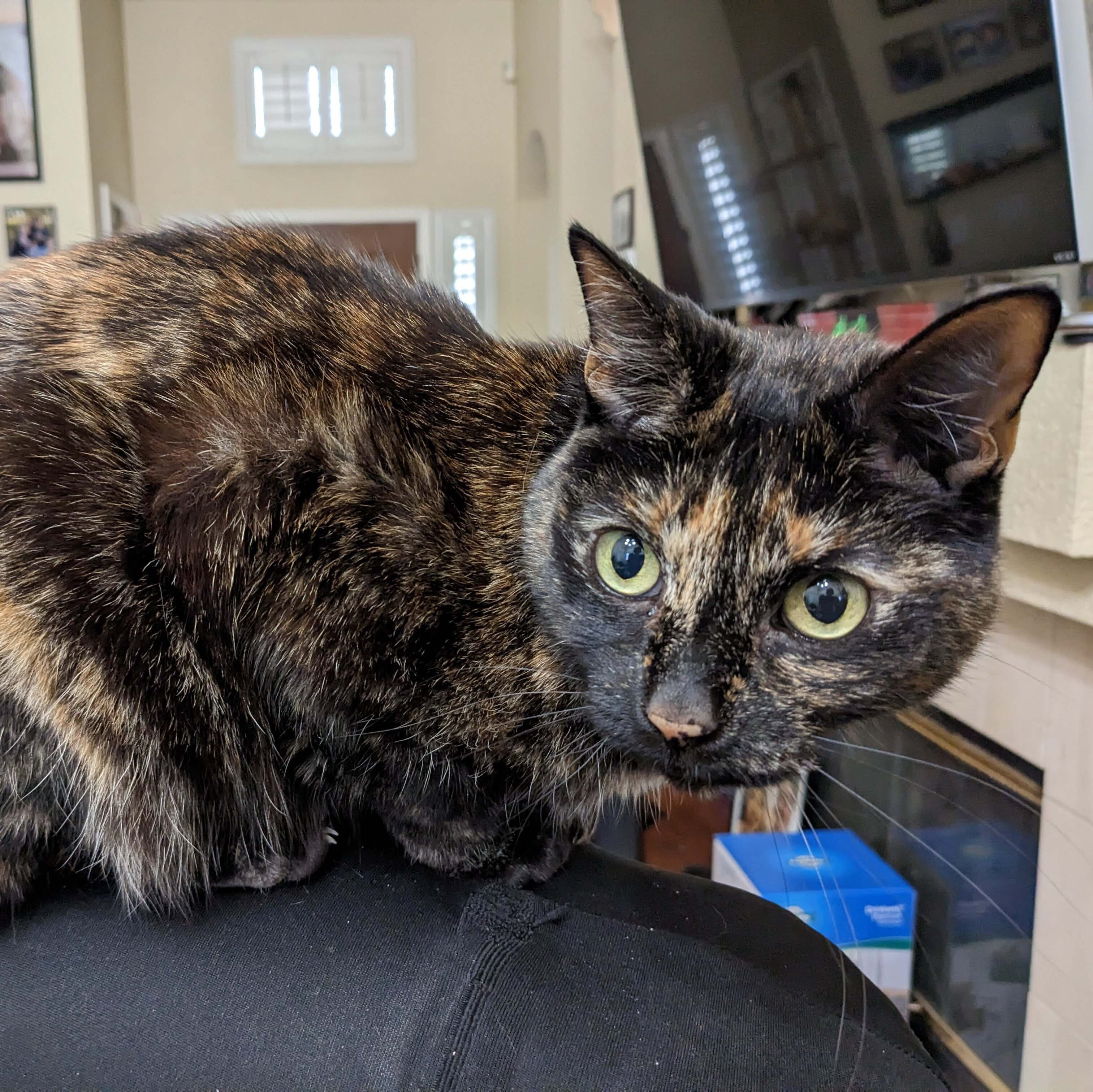For me it’s probably speech therapy and everything pertaining to that. I’m yet to encounter someone on here who is one apart from me (in training).
What about you?
I undeniably know more about fire than the average user here. I’m a circus performer with a decade of experience in fire performance/tech/safety, nothing phases me at this point
That’s so cool (heh)! How did you end up in that profession?
I started with fire spinning as a hobby and attending events. Eventually I got to manage a fire venue, received an invite to join a historic circus (Coney Island), and became a fire safety lead for a large fire retreat. The most important pillar for all this has been community.
Unfortunately I had to flee the US (thanks Trump) so I’m taking things slow for the moment, but I have huge plans for the future
Using sex toys anally/anal sex toys
My record is a 9 inch circumference
Have you ever tried a jar
Herpetology is my thing
I am sure there are some cryptologists here, soo… Nothing? Anyway, I know a bit about how RSA is inferior to eliptic-curve based schemes, and how security can be such a diverse and complicated topic than simple two-party communications.
Plumbing, since I’ve been a professional plumber in both North America and Europe. Not the most interesting knowledge base but alas, it is what it is. Other than that, Age of Empires II maybe?
Graded Modal Dependent Type Theory, but that’s mostly because only “dozens of” people know it exists.
What kind of grading do you give there? I guess the modal part is about the contexts for the type theory, but it has been some time I have looked into it.
I think “graded” in the name is there in contrast to “quantitative” type theory, which doesn’t have modalities/quantities at the type-level.
The “modal” is borrowed from modal logic. If you pick the correct semiring, you can recover linearity and affine-ity and the other substructural logic pieces.
The quantitative semiring I’ve been working with is
0, 1, ?, n, +, *, which I think will let me use static analysis to do very precise non-strictness and precise/early resource tracking/release. (But, my progress is so slow, that if this were an academic project, I don’t think I’d be getting any more grant funding.)I see, having modalities on type level makes sense as a grading, alike the grading of e.g. polynomial rings.
So you are going along the line of linearity and affine-ity? What kind of stuff are you working out?
https://gitlab.com/bss03/grtt is my published code. But, I have far more intuitions that I need to write code for than finished code.
While evaluating something well-typed under a context, the heap: does not need to contain a value for a binder with modality 0, must contain a single, strict value for a binder with a modality 1, must contain a single, lazy closure for a binder with a modality of ?, must contain multiple references to a shared, strict value for a binder with a modality n, must contain at least a single reference to a strict value for a binder with a modality of +, must contain at least a single reference to a lazy closure for a binder with a modality of *. Since the typing rules propagate the modalities to subterms precisely, we should be able to identify the exact point a closure must be forced to a value (or dropped) before runtime. That’s in addition to being able to compile linear functions to heap updates, eliminating at least some allocations.
There’s some similarities with both the exact-use-count and relevant-or-erased semirings, but I think some things (e.g. around sums) are hard/awkward/impossible to type and the ?/+/* modalities make some make things easier while still allowing the abstract machine to know exactly when to “optimize the heap” based on a runtime flow that “activates” a particular static analysis.
Of course, it’s still MLTT “compatible” – anything that would type-check in MLTT should type-check in my variation of GRTT by “simply” using the
*modality everywhere – so you get full proofs-as-programs and a total language.I’m probably a bit off in the weeds, but it still makes my brain buzz to think about and occasionally I’ll make progress. I’ve been a little bit distracted with https://gitlab.com/bss03/nested which should allow me to write the abstract machine as a fold, but as proven to be place I can also put a lot of programming time into (again, with sporadic real progress).
Interesting. Do you have some specific goal in mind? Like, implementing a language/library for the GRTT stuff.
Sure, eventually, I’d like a language with Haskell-ish syntax to compile to Linux x86_64 and webassembly and use the language to make better software. If my language existed today, I’d probably work on writing my own ActivityPub software, and improve/port https://github.com/NARBEHOUSE/Ben-s-Software- because my father might want it soon.
honestly, i know a little about many things so i don’t really know. i guess uh, when it comes to skill, i can definitely draw better than the average lemmy user, and i know some theory as well.
Anything remotely rural. It makes sense that Lemmy would be mostly city-dwellers, but I still manage to be surprised by the gap.
Cats, particularly kittens. I do a whole lot of fostering, particularly with very young and/or sick kittens. At this very moment, I have 16 fosters from 4 different litters.
Lighting and game design
Guitar, maybe. Definitely Pokemon breeding.
Pokémon breeding
Alright then bud, tell me about the genitals of the following Pokémon:
- Magnemite
- Muk
- Haunter
- Ditto
- Porygon
Describe the location, means of genetic exchange and palatation of fluids (if applicable)
Look, you want the trade secrets then you put in the work, you’ve got to earn this kind of information. You come down and put in some work at the ranch and you’ll find your answers.
Heavy metal and I actually doubt there’s anyone here who’s more of a walking encyclopedia
Video game programming, because I’ve been doing that for more than 20 years.
My cat’s thought process. I can tell when she’s getting annoyed or when she wants to randomly barf. It’s like a spidey sense.
Skydiving
~4500 jumps that included; night jumps, competition 4-way and 8-way, a couple of record jumps (I was on the a team that set state records in 3 different states back in the day) , Demos into various stadiums, air shows and a couple of NASCAR races.
I might know a thing or two that the average Lemmy user has no idea about.
Neat - paraglider here, but I know zero things about skydiving. It does seem to be common though, from talking to PG instructors, that skydivers learning PG tend to be very heavy handed with the controls. Just remember smooth and light if you ever try it out. :)
Depending on the size of the canopy, there can be a fair amount of pressure required to pull a toggle. Tandem rigs, which have 500ft^2 mains are somewhat difficult to guide by one person. Most TM’s that I know require their passenger to help out. Not that they cannot be flown by one person, just that doing that 10 times a day wears a person out.
My personal mains: PD Spectre 150 and 135, and Sharp Chuter (used for demo jumping) all had very different toggle pressures. The Sharp Chuter being the heaviest. It was also 90ft^2 larger (240ft^2) than my Spectre 150. My 135 had almost negligible toggle pressure. The smallest canopy I’ve ever jumped was a Velocity 103 and that thing has almost no toggle pressure what so ever. Plus with such high wing loading made it down right twitchy. Personally I was never one for ultra high wing loadings. Having 40mph approach speeds to landing was never appealing even when I was young.
Also skydiving canopies are a LOT more square than a paraglider. While I could not explain the physics there, it seems to me that a thin wing would have lighter toggle pressures. Canopies that I’ve jumped that were more tapered seemed to have a lighter toggle pressure of equally sized non-tapered canopies. A paraglider canopy is extremely tapered compared to a skydiving chute.
Also, don’t you folks have 6 risers? While there have been 6 riser skydiving rigs, they are very uncommon. So each riser requires a lot more pressure to pull… I’m assuming paraglides do riser turns and other maneuvers with them.
There is a Paragliding club here where I live. Even met one when he landed at a local park when I was out walking. I currently have one kid in college and another going to be there in a couple of years, so it’s not going to be anytime soon, but I would love to try it out. I’d love to get back into the air. Skydiving is pretty much out, as I have a back injury that could be made really bad with a hard opening.
To make a short story long… Yeah, I can see a skydiver being ham fisted with a paraglider. A jumper with a lot of experience with very high wing loading (over 2.0 to 1) might not, but me? Yeah, I’d probably ham it up for the first few hours. It would be interesting to learn just how much skydiving canopy experience would translate. I’m sure some would, but definitely not all.










